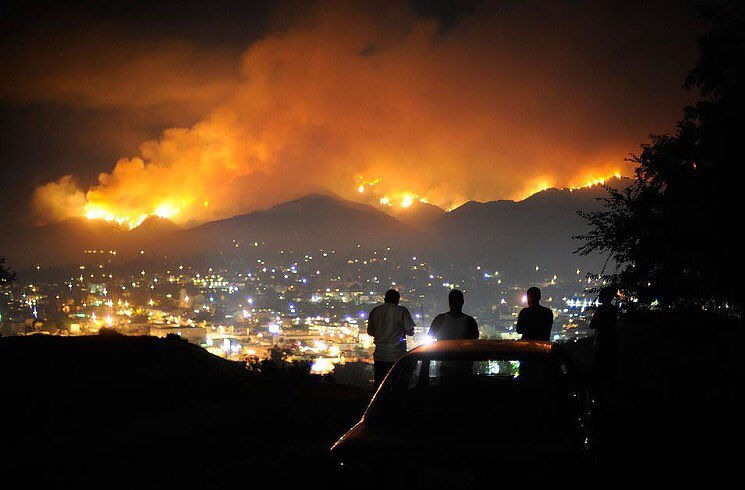Recent Fires in Los Angeles: A Call for Resilience
- EVENTURE SOLUTIONS

- Jan 14
- 4 min read
As the recent fires in Los Angeles leave an indelible mark on our community, our thoughts are with our friends and neighbors who have endured such devastating events. This season's fires have emerged as one of the most catastrophic disasters in California's history, affecting countless families and threatening our homes, businesses, and wildlife. As we grapple with the aftermath, we must look ahead and take meaningful steps to build resilience for the future. One way to achieve this is through the expansion of solar energy and battery storage systems.

The Immediate Impact of the Fires
The immediate consequences of the Los Angeles fires have been staggering. Thousands of acres have been scorched, and entire neighborhoods have been evacuated. According to recent reports, over 3,000 structures have been damaged or destroyed, affecting an estimated 10,000 residents. These fires not only lead to substantial property loss but also put immense pressure on emergency services and local infrastructures.
In addition to structural damage, the psychological and emotional toll on the community is profound. Many families have been displaced, and the uncertainty of returning to their homes weighs heavily on their minds. Mental health resources have become a priority for local organizations, who are stepping up to support those in need during this challenging time.
A Historical Context of Fires in California
California has a long history of wildfires driven by a combination of factors. Climate change, high winds, and prolonged drought conditions have exacerbated fire risks over the years. While wildfires are a natural part of California's ecosystem, the frequency and intensity of these fires have dramatically increased.
According to the California Department of Forestry and Fire Protection (CAL FIRE), the state has experienced five of its six largest wildfires in history since 2020. This alarming trend highlights the urgent need for communities to prepare and adapt. Moreover, with extensive burn scars left behind, soil erosion and flash flooding also become pressing concerns, compounding the challenges faced by affected neighborhoods.
The Importance of Solar and Battery Storage
In order to build more resilient communities, transitioning to renewable energy sources like solar power is crucial. Solar energy not only reduces greenhouse gas emissions but also provides a source of power during emergencies. Battery storage systems allow residents to store excess energy produced during the day for use during nighttime or in the event of a power outage.
For those who rely on the grid, power failures during fires can be devastating. Implementing solar and battery storage systems can help mitigate this issue. According to the U.S. Department of Energy, homes equipped with solar panels and sufficient battery storage have the potential to entirely disengage from the grid during emergencies, ensuring they remain powered when it matters most.
Additionally, local governments and organizations can provide incentives for adopting solar systems, such as rebates and tax credits. Residents should take advantage of these programs to invest in their homes and secure a sustainable energy future.

Community Resilience: A Collective Responsibility
Building resilience is not solely the responsibility of individuals; it requires collective action from local government, nonprofits, and businesses. As a community, we must come together to address vulnerabilities and develop robust emergency response strategies.
One example of community-centered disaster preparedness is the formation of Neighborhood Response Teams (NRTs). These grassroots organizations mobilize volunteers to assist with emergency planning, evacuation drills, and hazard awareness education. Empowering residents with the knowledge and resources they need to respond to disasters can significantly improve overall community resilience.
In light of the recent fires, local governments should also evaluate and reinforce their emergency response protocols. Examples include improving communication systems, ensuring that vulnerable populations receive the necessary support, and enhancing physical infrastructure to withstand future risks.
Moving Forward Together
We are currently at a pivotal moment. The destructive fires in Los Angeles have sparked conversations about the future of our cities and how we can become more resilient to disasters. By investing in renewable energy and enhancing community efforts, we can pave the way for a brighter, safer future.
As we move forward, we must remain committed to supporting those affected by the recent fires. Organizations across the region are working tirelessly to provide relief efforts and resources for those in need. If you are able, consider supporting these initiatives or volunteering your time to help those who have lost so much.
By prioritizing renewable energy initiatives, community preparedness, and collective action, we can reduce the impact of future disasters. The resilience of Los Angeles depends on our commitment to working together, prioritizing sustainability, and supporting each other through these challenging times.

Our Responsibility Moving Forward
As we reflect on the recent fires in Los Angeles, it is clear that we must proactively address the ongoing challenges posed by climate change and natural disasters. Our commitment to renewable energy solutions like solar and battery storage is not just a choice; it is a necessity for the future of our communities.
By fostering a culture of resilience, we honor those affected by the fires and equip ourselves for the uncertain challenges ahead. Let us stand together in solidarity, support one another, and take actionable steps toward a more sustainable and resilient Los Angeles.
For more information on how you can get involved or support recovery efforts, visit https://recovery.lacounty.gov/




Comments